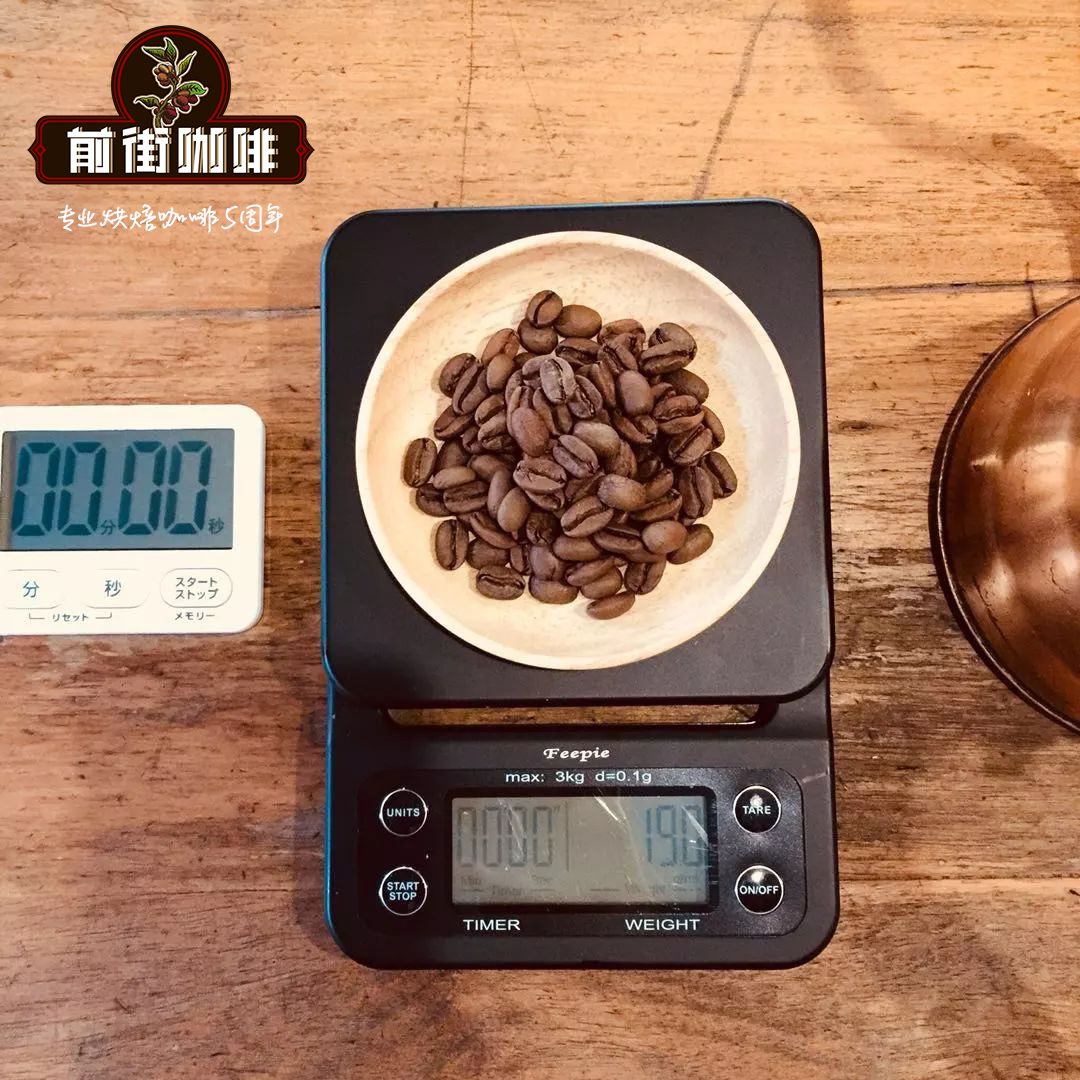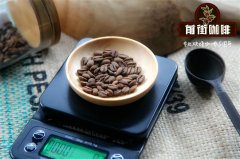A brief introduction to the manor in Guanacaster, Costa Rica, do coffee beans have any outstanding flavor?

Professional coffee knowledge exchange more coffee bean information please follow the coffee workshop (Wechat official account cafe_style)
Costa Rican Guanacaster coffee taste
Costa Rican coffee is usually very pure and sweet, but the alcohol thickness tends to be light and elegant. In recent years, many processing plants have begun to produce coffee with a variety of tastes and styles.
Coffee has been grown in Costa Rica since the early 19th century, and after Costa Rica became independent from Spain in 1821, the then self-government gave free coffee seeds to farmers to encourage coffee cultivation.
Revolutionary Movement of Guanacaster Microprocessing Plant in Costa Rica
By the mid and late 2000s, coffee farmers had their own post-harvest processing equipment, so they were able to deal with most of the coffee on their own, indicating that coffee farmers had more control over their coffee and style, and coffee production increased greatly.
Costa Rica is the most advanced and safest country in Central America, attracting a large number of tourists, so the coffee industry collides with the tourism industry, and it is quite easy to visit the local coffee garden. The eight major coffee producing areas are: Western Valley West Valley, Central Valley Central Valley, Tarasu Tarrazu, Sanhe Tres Rios, Eurosci Orosi, Brenka Brunca, Duli Alba Turrialba, Guanacaster Guanacaste.
History of Guanacaster, Costa Rica
Costa Rica, with fertile volcanic soil and good drainage, was the first country in Central America to grow coffee and bananas for commercial value. Coffee and bananas are the country's main exports.
Coffee was introduced into Costa Rica from Cuba in 1729. Today, its coffee industry is one of the most well-organized industries in the world, with a yield of 1700 kilograms per hectare. Costa Rica has only 3.5 million people, but there are 400m coffee trees, and coffee exports account for 25 per cent of the country's total exports. Costa Rica has also benefited from the establishment of the Central American Society for Agricultural Research (Turrialba of the CentralAmerican Agricultural Research Institute, IAAC) in Tarasu, which is an important international research centre.
High-quality Costa Rican coffee is called "extra hard beans". This kind of coffee can grow at an altitude of more than 1500 meters. Altitude has always been a problem for coffee growers. The higher the altitude, the better the coffee beans, not only because the higher altitude can increase the acidity of the coffee beans and thus increase the flavor, but also because the night temperature at the higher altitude is lower, which can make the trees grow slowly, thus making the coffee beans have a stronger flavor. In addition, due to the high altitude drop caused by sufficient rainfall, is also very beneficial to the growth of coffee trees.
However, while there are many advantages to growing coffee at higher elevations, the resulting additional transport costs must be taken into account, which is likely to make coffee production unprofitable. The coffee industry in Costa Rica has adopted new technologies to increase efficiency, including the use of "electric eyes" to select beans and identify coffee beans of irregular size.
Located in the south of the country's capital, San Jos é, Tarasu is one of the most valued coffee growers in the country. La Minita Tarrazu coffee is a famous local product, but its production is limited, about 72600 kilograms a year. It is grown on a piece of land called La Minita, which is owned by the last three generations of the McAlpine family in the UK. In fact, this land can produce more than 450 tons of coffee a year. But Tarasu Latin America coffee is grown without artificial fertilizers or insecticides, and its harvesting and selection are done by hand, in order to avoid some damage to coffee beans caused by air spray selection.
Other coffees worth mentioning are Juan Vinas,PR, H.Tournon, Windmill,SHB, Monte bello and Ssnta Rosa. Fine coffee is generally grown in Geredia and the central canyon. Another striking type of coffee is Sarchi (one of the five towns representing Costa Rica's Coffee Road), which grows on the slopes of the Poas Volcano volcano, 53km from San Jose. Saatchi, founded in 1949, has a land area of 30770 hectares and grows sugar cane and coffee. The area is also famous for its handicrafts, attracting tourists from all over the world.
The coffee industry in Guanacaster, Costa Rica, which was originally controlled by Instituto del Caf é deCosta Rica (ICAFE), has been taken over by the official Coffee Committee (Oficinadel Caf é). Among the exported coffee, those products that are considered to be of substandard quality are colored with blue vegetable dyes and then transferred back to China for sale. Coffee consumed domestically (dyed blue or undyed) accounts for about 10% of total production, and local per capita coffee consumption is twice that of Italy or the United States.
Important Notice :
前街咖啡 FrontStreet Coffee has moved to new addredd:
FrontStreet Coffee Address: 315,Donghua East Road,GuangZhou
Tel:020 38364473
- Prev

The famous Coffee Manor in Mexico introduces the production and cultivation of fine coffee in Mexico.
For more information on coffee beans, please follow the Coffee Workshop (Wechat official account cafe_style) [famous Mexican Coffee Manor]: * Mexican Coffee: cold Canadian Manor (Caada Fra) is located in the alpine valleys (Huatusco-Xalapa, Axocuapan community) of Huatusco Chara Pasu Wipa District (Huatusco).
- Next

Costa Rica Guanacaster coffee beans washed in the sun, what's the difference between which flavor tastes good?
Professional coffee knowledge exchange more coffee beans Please follow Coffee Workshop (Wechat official account cafe_style) Guanacaster, Costa Rica is one of the familiar coffee producing areas, you must often see beans like XX Manor / processing Plant Honey treatment in Costa Rica. Speaking of which, someone may raise his hand and say, "teacher, I know!" Honey treatment is to add honey to deal with it.
Related
- Does Rose Summer choose Blue, Green or Red? Detailed explanation of Rose Summer Coffee plots and Classification in Panamanian Jade Manor
- What is the difference between the origin, producing area, processing plant, cooperative and manor of coffee beans?
- How fine does the espresso powder fit? how to grind the espresso?
- Sca coffee roasting degree color card coffee roasting degree 8 roasting color values what do you mean?
- The practice of lattes: how to make lattes at home
- Introduction to Indonesian Fine Coffee beans-- Java Coffee producing area of Indonesian Arabica Coffee
- How much will the flavor of light and medium roasted rose summer be expressed? What baking level is rose summer suitable for?
- Introduction to the characteristics of washing, sun-drying or wet-planing coffee commonly used in Mantenin, Indonesia
- Price characteristics of Arabica Coffee Bean Starbucks introduction to Manning Coffee Bean Taste producing area Variety Manor
- What is the authentic Yega flavor? What are the flavor characteristics of the really excellent Yejasuffi coffee beans?

